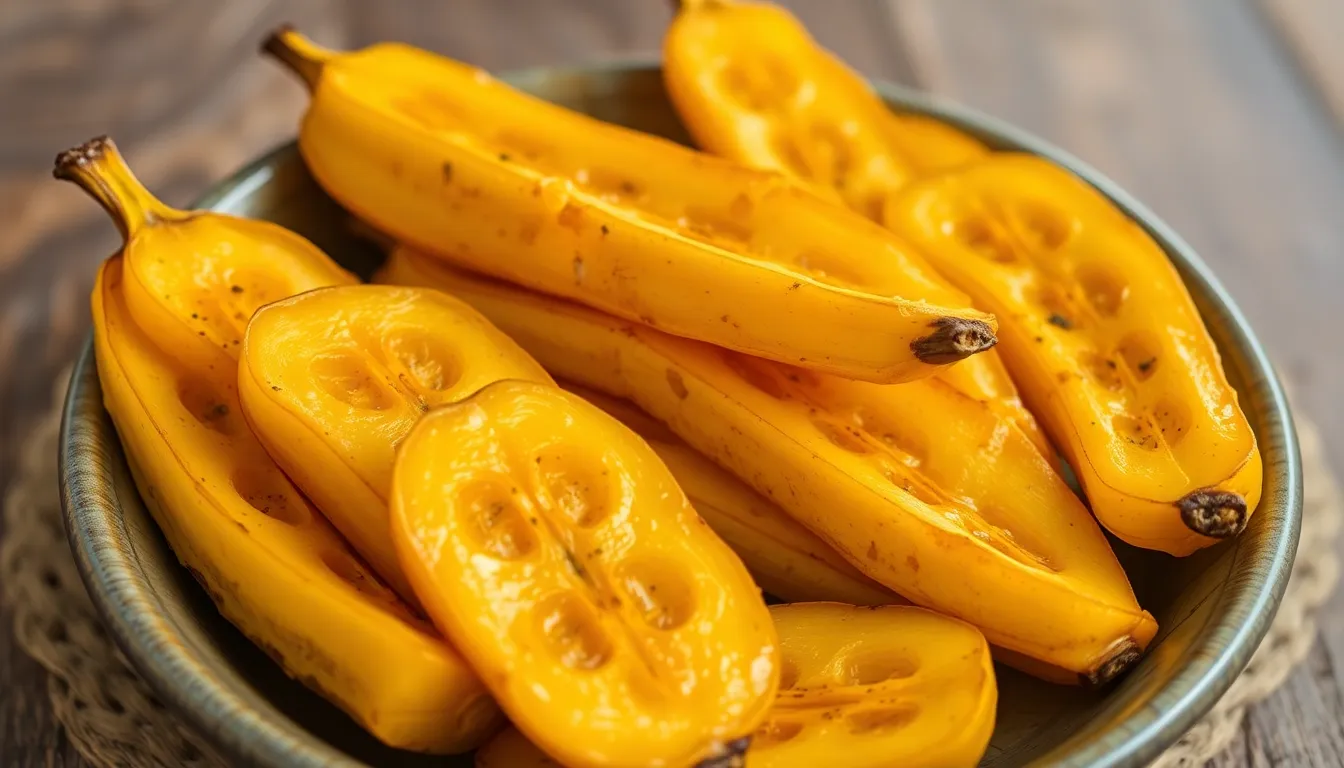How to Dehydrate Plantains: A Sweet Treat
Are you looking for a healthy and delicious snack that can satisfy your cravings without the guilt? Dehydrated plantains are an excellent choice! Easy to make and full of flavor, they serve as a nutritious alternative to traditional snacks. In this article, we will explore the process of dehydrating plantains, from selecting the right ones to enjoying them in creative ways.
Importance of Dehydrating
Dehydrating fruits, particularly plantains, has several benefits. It not only enhances the flavor and sweetness but also preserves the nutrients while extending shelf life. This method allows you to enjoy your favorite snacks without preservatives and additives. Plus, dehydrated plantains are versatile and can be used in various dishes or eaten straight as a crunchy snack!
Overview of the Article
This article will guide you through:
- Understanding plantains and their nutritional benefits.
- Choosing the right plantains for dehydration.
- Preparing plantains prior to dehydration.
- Different methods of dehydrating plantains.
- Storing dehydrated plantains effectively.
- Creative ways to enjoy dehydrated plantains.
Section 1: Understanding Plantains
What Are Plantains?
Plantains are a variety of banana that are larger, starchier, and less sweet than dessert bananas. They are a staple food in many tropical regions and are used in diverse culinary applications, from savory dishes to sweet desserts. Plantains are typically cooked before consumption, whether they’re boiled, fried, or baked.
Nutritional Benefits
Plantains are rich in vitamins and minerals, offering numerous health benefits:
- High in dietary fiber, promoting digestive health.
- Excellent source of potassium, which supports heart health.
- Rich in vitamin C, an antioxidant that helps boost the immune system.
- Provides complex carbohydrates, supplying sustained energy.
Section 2: Choosing the Right Plantains
Selecting Plantains
When selecting plantains for dehydration, look for ones that are ripe. Ripe plantains will have a yellow color with some black spots, indicating they are sweet and ready for use. Avoid green plantains, as they are starchy and may not yield the desired sweetness when dehydrated.
Color Guide
Understanding the different stages of plantains can help you select the right ones for your needs:
| Color Stage | Description | Flavor Profile | Best Uses |
|---|---|---|---|
| Green | Firm and starchy | Mild, less sweet | Savory dishes, frying |
| Yellow | Ripe and sweeter | Sweet, softening | Baking, dehydrating |
| Black | Overripe | Very sweet, soft | Desserts, smoothies |
Section 3: Preparing Plantains for Dehydration
Peeling Plantains
Peeling plantains can be tricky due to their thick skin. Follow these steps for easy peeling:
- Cut off both ends of the plantain.
- Make a shallow cut along the skin lengthwise.
- Gently lift the skin away from the flesh using your fingers; it should come off easily.
Slicing Techniques
Once peeled, the way you slice the plantains can impact the dehydration process:
- Thin slices (1/8 inch): Ideal for crispy snacks.
- Thick slices (1/4 inch): Result in chewier treats.
Section 4: Dehydrating Plantains
Methods for Dehydration
There are three primary methods for dehydrating plantains:
- Food dehydrator
- Oven
- Air drying
Step-by-Step Guide for Each Method
Food Dehydrator
Using a food dehydrator is the most efficient method for dehydrating plantains:
- Arrange the sliced plantains on the dehydrator trays in a single layer.
- Set the temperature to 135°F (57°C).
- Dehydrate for about 6-8 hours, checking occasionally.
- When they are firm and no longer sticky, they are done.
Oven Method
If you don’t have a dehydrator, you can use your oven:
- Preheat the oven to 200°F (93°C).
- Place the sliced plantains on a baking sheet lined with parchment paper.
- Bake for 2-3 hours, flipping them halfway through to ensure even drying.
- Check for a dry, leathery texture before removing them.
Air Drying
This method is less common but can work in dry climates:
- Place the slices on a clean, dry surface or a drying rack.
- Ensure they are spaced out to allow air circulation.
- Let them dry for several days, bringing them inside at night to prevent moisture.
Section 5: Storing Dehydrated Plantains
Best Practices for Storage
To ensure your dehydrated plantains stay fresh:
- Store them in airtight containers or vacuum-sealed bags.
- Choose a cool, dark place, away from direct sunlight.
- Consider adding oxygen absorbers to prolong shelf life.
How to Tell When They’re Done
Properly dehydrated plantains should be:
- Firms to the touch.
- No longer sticky.
- Lightweight and slightly pliable, depending on your desired texture.
Section 6: Creative Ways to Enjoy Dehydrated Plantains
Snack Ideas
Dehydrated plantains can be enjoyed in various ways:
- As a standalone snack straight from the container.
- Crumble them as a topping for yogurt or oatmeal.
- Pair with nut butter or cheese for a delightful treat.
Incorporating into Recipes
Enhance your favorite recipes by incorporating dehydrated plantains:
- Add to granola bars or trail mix for a little sweetness.
- Use in smoothies for added texture and flavor.
- Rehydrate them in soups or stews for a unique twist.
Conclusion
Dehydrating plantains offers a multitude of benefits, from preserving their nutritional value to creating a tasty snack that lasts for months. Whether you enjoy them as a sweet treat, part of a recipe, or a crunchy on-the-go option, dehydrated plantains are a fantastic addition to your pantry.
We encourage you to try dehydrating plantains at home! Not only is it a fun culinary adventure, but it may also become your new favorite way to enjoy this versatile fruit. Share your experiences and recipes with us, and let’s continue the conversation about delicious plant-based snacks!




